- Physics Department, University of Idaho, Moscow, ID, United States
The profile of a neutron star probes a very large range of densities, from the density of iron up to several times the density of saturated nuclear matter, and thus no theory of hadrons can be considered reliable if extended to those regions. We emphasize the importance of taking contemporary ab initio theories of nuclear and neutron matter as the baseline for any extension method, which will unavoidably involve some degree of phenomenology. We discuss how microscopic theory, on the one end, with causality and maximum-mass constraints, on the other, set strong boundaries to the high-density equation of state. We present our latest neutron star predictions where we combine polytropic extensions and parametrizations guided by speed of sound considerations. The predictions we show include our baseline neutron star cooling curves.
1 Introduction
A fully microscopic equation of state (EoS) up to central densities of the most massive stars–potentially involving phase transitions and non-nucleonic degrees of freedom–is not within reach. Nevertheless, neutron stars are powerful natural laboratories for constraining theories of the EoS (Abbott et al., 2017a; Abbott et al., 2017b; Abbott et al., 2018; Abbott et al., 2019; Miller et al., 2019; Miller et al., 2021). One must be mindful of the theory’s limitations and the best ways to extract and interpret information from observational constraints. Recently, detection of gravitational waves from merging of binary neutron star systems provided constraints on both their radius and tidal deformability.
Large Bayesian interference analyses have become popular as a tool to constrain the properties of neutron-rich matter. An example is Huth et al., (2022), where the authors sample 15,000 EoSs, together with observational constraints and heavy ion collision (HIC) data. These analyses are important, but one must be careful about interpretation–relating HIC observables to parametrizations of the EoS is not a model-independent process. It is therefore not surprising that the authors of Huth et al. (2022). find that the HIC constraints tend to prefer stiffer EOSs than those favored by astrophysical observations, and, we add, stiffer than those generated by ab initio theory. The reasons can be found in the phenomenological density functionals inspired by Quantum Hydrodynamics (QHD), often used to relate HIC observables to the EoS parameters. This point will be discussed in sect. III. Recent empirical determinations of the stellar matter EoS from data and observations have been reported (Tsang et al., 2024; Davis et al., 2024a). A Bayesian inference study aimed at assessing the performance of the Skyrme energy density functionals can be found in Klausner et al. (2025).
When using sophisticated statistical techniques, it’s important not to lose sight of basic physics arguments, such as the importance of a realistic description of few-body data. An extensive discussion on this point can be found in Sammarruca (2024).
In this paper, keeping a firm foot in the microscopic theory–that is, with no adjustments of nuclear forces in the medium–we wish to illustrate general features of the EoS in different density regions, based only on theory (for normal to moderately-above-normal densities), and a few robust constraints, such as causality and the most recent maximum-mass constraints (Romani et al., 2022) (for high and superhigh densities).
The cooling properties of neutron stars, observationally accessible in terms of temperature (or luminosity) vs. age relations, are also an important tool to obtain a glimpse on the internal structure and composition of these exotic systems. Ages and thermal luminosities of neutron stars, inferred from observations, can be interpreted with the aid of the neutron star cooling theory to gain information on the properties of superdense matter in the interior of the star. We present our first results of cooling simulations, and compare with available observational estimates of thermally emitting isolated neutron stars (INS) (Potekhin et al., 2020). We recall that rapid cooling signals large proton fractions, which render the direct Urca (DU) process possible at lower densities in comparison with softer models. Thus, rapid cooling signals a steep symmetry energy.
This paper is organized as follows. In sect. II, we review our theoretical ingredients, omitting details that have been published elsewhere. In sect. III, we discuss continuations of the EoS above the microscopic predictions. In sect. IV, we show preliminary predictions of cooling curves. A robust analysis of neutron star cooling, including superfluid gaps and more, will appear in a later work.
2 The equation of state at normal to moderately high density
2.1 Theoretical framework
The theoretical framework we use to obtain the ab initio part of the equation of state has been published in detail elsewhere (Sammarruca and Millerson, 2021a; Sammarruca and Millerson, 2021b; Sammarruca and Millerson, 2022), and thus we will not repeat a lengthy presentation here. We will, however, briefly recall the spirit of chiral effective field theory (EFT), on which our nuclear forces are based. A comprehensive and detailed review of our theoretical tools can be found in Machleidt and Sammarruca (2024).
Given an energy scale and degrees of freedom appropriate at that scale, an EFT comprises all interactions consistent with the symmetries that govern those degrees of freedom. For the nuclear problem, relevant degrees of freedom are pions (Goldstone bosons), nucleons, and
The neutron star crust is composed of metals in crystalline structure and cannot be described as a homogeneous fluid of nucleons, which is an appropriate system for our microscopic approach. Instead, a realistic crustal EoS (Negele and Vautherin, 1973) is joined to our previously described EoS via cubic spline interpolation. The crust is a Coulomb lattice of bound neutrons and protons clusters surrounded by a dilute neutron gas. We are aware of recently developed tools to construct unified core-crust EoS (Davis et al., 2024b; Davis et al., 2025). Given a
2.1.1 Quantifying errors in chiral EFT
A reliable determination of the truncation error is a crucial aspect of chiral EFT. If observable
which is a measure for what is neglected at order
Throughout the paper, we will show results at the (fully consistent) third order (
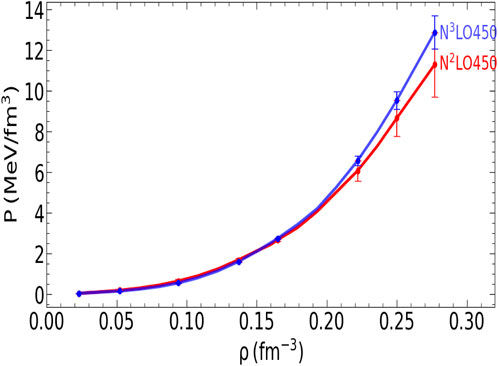
Figure 1. Pressure as a function of density in
The uncertainty in the value of observable
is a reasonable estimate for
In infinite matter,
Cutoff variations have sometimes been used to estimate contributions beyond truncation. However, they do not allow to estimate the impact of neglected long-range contributions. Also, due to the intrinsic limitations of the EFT, a meaningful cutoff range is hard to estimate precisely, and often very limited. The method of Equation 3 allows to determine truncation errors from predictions at all lower orders, without the need to use cutoff variations.
2.1.2 Chiral orders and three-nucleon forces: unresolved issues
While the predictions at
Throughout the paper, we will show results at the (fully consistent) third order (
3 The equation of state at high density
It is important to emphasize that high-density EoS continuations are not meant to be a replacement for microscopic theories which, at this time, are not feasible in those regimes. Nevertheless, causality and maximum-mass constraints do pose considerable restrictions on the general features of the high-density EoS.
Up to this point, we have used piecewise polytropes, which have the form:
where
or,
For a range of
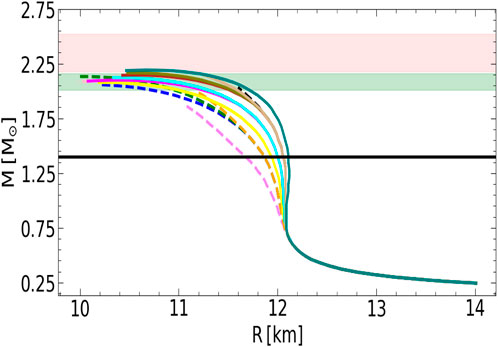
Figure 2. M(R) relations obtained with piecewise polytropes (Sammarruca and Millerson, 2022). Equations of state that cannot support a maximum mass of at least 2.01
Currently, the maximum-mass constraint must account for the record-setting PSR J0952-0,607, the heaviest neutron star found to date, at 2.35
We explored different piecewise parametrizations of the high-density EoS that preserve causality, while supporting masses at least as high as 2.2
While checking different polytropic combinations, we made the observation that the “best” combination (with regard to preserving causality while satisfying maximum-mass constraints) consists of a relatively stiff polytrope attached to the microscopic piece of the EoS, followed by a second, softer polytrope.
Although polytropic extension, see Equation 4, is a very general and popular method, alternative parametrizations of the high-density EoS offer desirable features (Kanakis-Pegios et al., 2021; Tews et al., 2018), such as those in terms of the speed of sound. In Figure 3, the colorful curves are from selected EoS that generate maximum masses of about 2.1–2.2 solar masses and are consistent with causality. Table 1 provides more information about these cases. We note that chiral uncertainties as those in Figure 1 are not shown in the figures for the
and
where we have used Equation 5.
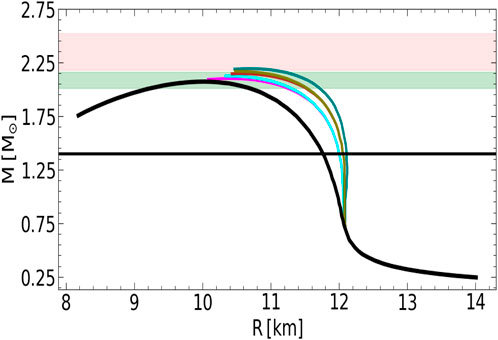
Figure 3. Several M(R) relations. The curves in color are obtained from a sequence of two polytropes with adiabatic indices given in Table 1. The black curve is obtained with a single parametrization in terms of the speed of sound, as in Equation 11.
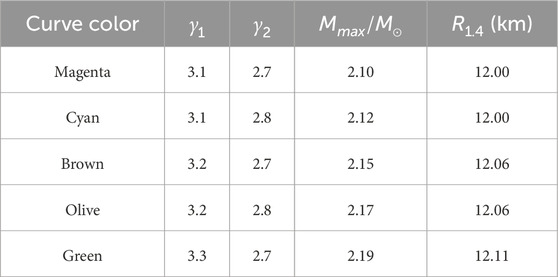
Table 1. Description of the M(R) relations in Figure 3.
The speed of sound is parametrized as
where
The pressure above the threshold is
This EoS continuation is manifestly causal at any density and reaches a maximum mass of 2.07
From the considerations above, we find that, for the purpose of achieving high maximum masses while respecting causality at any density, a better solution is to combine a relatively steep (on the scale of Table 1) polytrope followed by a parametrization obtained from Equations 7–11, which will maintain causality by construction. The matching densities are
where
we take Equation 13 as the typical momentum of the system,
The resulting M(R) curves are shown on the LHS of Figure 4 for both
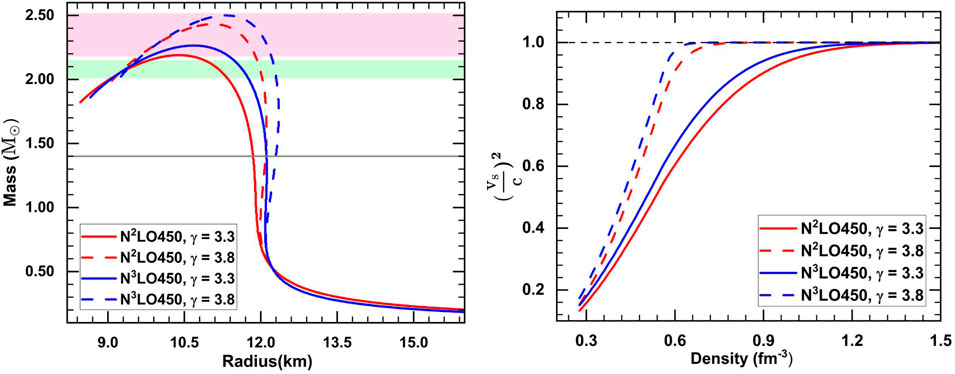
Figure 4. Left: M(R) curves at fourth order (

Table 2. Some neutron star properties corresponding to the red and the blue M(R) relations shown in Figure 4.
We conclude that a polytrope which bridges the chiral EFT predictions with a causality-maintaining parametrization, has a limited range of powers. We underline that this scenario is inherently related to the softness of the chiral predictions. In other words, the nature of the predictions at normal density have a far-reaching impact, which extends to densities up to a few times normal density.
In the QCD limit of deconfined quarks in the presence of asymptotic freedom, quarks should behave like free fermions. Some perturbative QCD calculations (Brandes et al., 2023) support the conformal limit,
Of course, what we have presented is not the only option for building EoS that are consistent with current astronomical obervations. We maintain, though, that an EoS must be “bounded from below” by free-space few-nucleon data (which, in turn, have a strong impact on the symmetry energy and the pressure in neutron-rich matter at normal densities). Typical examples of the other end of the spectrum are phenomenological EoS, such as those from Relativistic Mean Field (RMF) models. With no constraints from microscopic few-nucleon forces, new parametrizations can be constructed using different nonlinear, self- and inter-couplings among meson and nucleon Dirac fields (Kumar et al., 2023). Isovector mesons carry isospin dependence, with the main contribution to the symmetry energy coming from the pion (Sammarruca, 2011). In the RMF (pionless) framework, the interplay between the isovector
Before closing this section, we like to offer a few comments on EFT-inspired energy-density functionals (EDFs) that have been proposed in recent years. Traditional EDFs are based on the mean-field (MF) approximation and built on empirical ingredients, which clearly prevent them from having truly predictive power. Furthermore, they do not follow a power-counting scheme, which prevents a reliable estimation of theoretical uncertainties. Attempts have been made to render EDFs less empirical, trying to directly link them to microscopic ingredients so as to reduce their intrinsic uncertainties (Grasso, 2019; Burrello et al., 2020). While this is potentially an improvement over traditional EDFs, it is our understanding that these schemes are perturbative in diluted matter. In fact, the YGLO (Yang-Grasso-Lacroix-Orsay) (Yang et al., 2016) functionals are suitable at very low densities. Were they not perturbative at all, a connection with power counting would not be possible.
4 Cooling of neutron stars
4.1 General considerations
To create context, we review here some basic facts about INS cooling.
Accurate modelling of neutron star cooling with account of all possible effects is a complex problem. Cooling can be affected, for instance, by the presence of free hyperons or deconfined quarks (see Wei et al. (2020) and references therein), and pion or kaon condensation (see Yakovlev et al. (2001)) and references therein).
The internal structure of the neutron star can be taken, to a good approximation, to be spherically symmetric, except for fast rotating INS or strong magnetic fields. It is also reasonable to expect that the temperature distribution is spherically symmetric at sufficiently high densities. Under these assumptions, the mechanical structure and temperature distribution are determined by a set of differential equations (Richardson et al., 1982) which involve only one spatial coordinate, the radial coordinate
Neutron stars cool down mainly via neutrino emission from their cores and photon emission from their atmospheres. They are relativistic objects, and thus one needs to be careful about the coordinate system. The local temperature at some distance
where
The outermost layer of a neutron star is the atmosphere, consisting of gas elements which emit thermal photons that can be observed on the Earth. Surface luminosity and temperature can be inferred by fitting this photon flux, and is a major source of cooling for older neutron stars. Below the atmosphere, there is a thin region called envelope, whose chemical composition is uncertain.
Although the distribution of the surface temperature over the surface can be non-uniform, it is customary to approximate the surface photon emission as the blackbody radiation from the entire surface. To that end, one introduces the overall surface effective temperature of the star,
where
where
Either surface temperatures or photon luminosities can be used to compare neutron-star observations with the cooling theory. Both can be obtained with spectral analysis, but accurate determination is usually a challenge. One of the problems with obtaining accurate data suitable for testing the theory of cooling is that the vast majority of neutron stars, including INS, emit intense radiation of non-thermal origin. Neutron star binary systems are usually surrounded by an accretion disk, whose emission is orders of magnitude more powerful than the thermal emission from the neutron star surface (Das et al., 2024). Non-thermal emission of INS can also be produced by other processes, and thus a careful analysis is required to extract the thermal component of the observed spectrum. Another problem is that obtaining the ages of neutron stars from observation is difficult, and thus ages are only estimates. Neutron stars that are estimated to be old have lost their initial heat, and therefore their thermal luminosity is very low, and could have been produced by reheating (Gonzalez-Jimenez et al., 2015; Gonzalez-Caniulef et al., 2019).
In summary, the “standard” cooling theory, which neglects reheating, can only be tested against observations of a small fraction of INS, using estimated ages.
4.2 Proof of concept results
In this section, we perform cooling simulations employing the two EoS used to generate the red and blue
From Figures 5, 6, one can see the mass dependence of the effective temperature and the closely related luminosity, see Equations 14–17. The more massive INS correspond to faster cooling, suggesting that enhanced neutrino emission due to DU reactions operates in those stars, where the proton fraction in the interior reaches values sufficient to enable the process. Pairing, not included here, could suppress DU processes. The data are from Potekhin et al. (2020).

Figure 5. Effective temperature as a function of time, for different masses (colors). Left:

Figure 6. Photon luminosity as a function of time, for different masses (colors). Left:
The difference between Figures 5, 7 is the model for the envelope. In Figure 5, the envelope contains light elements up to densities where they can still be present, and heavier elements, including iron, at the higher densities (Potekhin et al., 1997). More precisely, blanketing envelopes are composed, from surface to bottom, of hydrogen, helium, carbon, and iron shells, in a stratified structure. In Figure 7, older iron models for the envelope (Nomoto and Tsuruta, 1987) are employed to gauge the sensitivity to the chemical composition of the envelope. We find the latter to have a significant impact on the cooling curves, especially for low to medium mass neutron stars. The envelope acts as a thermal insulator between the surface and the hot interior, thus relating interior temperature to the star’s effective surface temperature. There is a large temperature gradient between the top and bottom layers of the envelope, determined by the amount of light elements such as Hydrogen or Helium. Therefore, the composition of the envelope impacts its photon cooling.

Figure 7. As in Figure 5, but with envelope model from Nomoto and Tsuruta (1987).
Some investigations (Das et al., 2024) have concluded that an EoS allowing DU cooling for a wide enough mass range of neutron stars, combined with some quenching by the
5 Conclusions and work in progress
The intrinsic and strong relation between the EoS and the maximum mass of a neutron star sequence is a remarkable feature. In fact, knowledge of one is essential to access the other. In our observations, the maximum-mass constraint moving to higher values, together with the causality requirement at any central density, poses significant restrictions on the high-density EoS. The softness of the microscopic predictions at normal density brings up the need for a (first) steeper extension. A scenario such as the one we have described, where the first part of a piecewise extension needs to become stiffer in order to support current maximum mass constraints, while the next piece must soften to maintain causality, is consistent with evolving maximum-mass constraints.
A monotone behavior of the speed of sound approaching the conformal limit seems to be excluded by mass constraints, which require a rapid growth to allow masses of 2
In closing, we reiterate that a microscopic theory of the nuclear many-body problem must start from quantitative descriptions of few-nucleon interactions. Those constraints have implications at normal density and well beyond it.
We also took the opportunity to display cooling curves as the foundation of a forthcoming comprehensive analysis, including gaps and medium effects. Based on the available literature, one may conclude that the impact of including 3NFs or other medium effects in calculations of the triplet pairing gap in neutron matter vary wildly, both quantitatively and qualitatively, depending on the specifics of the input. Systematic studies with robust two- and three-nucleon forces are called for.
Data availability statement
The original contributions presented in the study are included in the article/supplementary material, further inquiries can be directed to the corresponding author.
Author contributions
FS: Writing – original draft. TA: Writing – review and editing.
Funding
The author(s) declare that financial support was received for the research and/or publication of this article. This work was supported by the U.S. Department of Energy, Office of Science, Office of Basic Energy Sciences, under Award Number DE-FG02-03ER41270.
Acknowledgments
The authors are grateful to Dany Page for help with the NSCool cooling simulation package.
Conflict of interest
The authors declare that the research was conducted in the absence of any commercial or financial relationships that could be construed as a potential conflict of interest.
Generative AI statement
The author(s) declare that no Generative AI was used in the creation of this manuscript.
Publisher’s note
All claims expressed in this article are solely those of the authors and do not necessarily represent those of their affiliated organizations, or those of the publisher, the editors and the reviewers. Any product that may be evaluated in this article, or claim that may be made by its manufacturer, is not guaranteed or endorsed by the publisher.
References
Abbott, B. P., Abbott, R., Abbott, T., Abraham, S., Acernese, F., Ackley, K., et al. (2019). GWTC-1: a gravitational-wave transient catalog of compact binary mergers observed by LIGO and virgo during the first and second observing runs. Phys. Rev. X 9, 031040. doi:10.1103/physrevx.9.031040
Abbott, B. P., Abbott, R., Abbott, T., Acernese, F., Ackley, K., Adams, C., et al. (2017a). GW170817: observation of gravitational waves from a binary neutron star inspiral. Phys. Rev. Lett. 119 (16), 161101. doi:10.1103/physrevlett.119.161101
Abbott, B. P., Abbott, R., Abbott, T., Acernese, F., Ackley, K., Adams, C., et al. (2018). GW170817: measurements of neutron star radii and equation of state. Phys. Rev. Lett. 121 (16), 161101. doi:10.1103/physrevlett.121.161101
Abbott, B. P., Abbott, R., Abbott, T. D., Acernese, F., Ackley, K., Adams, C., et al. (2017b). Multi-messenger observations of a binary neutron star merger. Astrophys. J. Lett. 848 (2), L12. doi:10.3847/2041-8213/aa91c9
Bernard, V., Epelbaum, E., Krebs, H., and Meissner, U.-G. (2008). Subleading contributions to the chiral three-nucleon force: long-range terms. Phys. Rev. C 77, 064004. doi:10.1103/physrevc.77.064004
Bernard, V., Epelbaum, E., Krebs, H., and Meissner, U. G. (2011). Subleading contributions to the chiral three-nucleon force II: short-range terms and relativistic corrections. Phys. Rev. C 84, 054001. doi:10.1103/physrevc.84.054001
Brandes, L., Weisei, W., and Kaiseri, N. (2023). Inference of the sound speed and related properties of neutron stars. Phys. Rev. D. 107, 014011. doi:10.1103/physrevd.107.014011
Burrello, S., Grasso, M., and Yang, C. J. (2020). Towards a power counting in nuclear energy-density-functional theories through a perturbative analysis. Phys. Lett. B 811, 135938. doi:10.1016/j.physletb.2020.135938
Das, H., Wei, J.-B., Burgio, G., and Schulze, H.-J. (2024). Neutron star cooling and mass distributions. Phys. Rev. D. 109, 123018. doi:10.1103/physrevd.109.123018
Davis, P. J., Dinh Thi, H., Fantina, A. F., Gulminelli, F., Oertel, M., and Suleiman, L. (2024a). Inference of neutron star properties with unified crust-core equations of state for parameter estimation. Astronomy & Astrophysics 687, A44. doi:10.1051/0004-6361/202348402
Davis, P. J., Thi, H. D., Fantina, A. F., and Gulminelly, F. (2024b). Inference of neutron-star properties with unified crust-core equations of state for parameter estimation. Astron. Astrophys. 687, 44. doi:10.48550/arXiv.2406.14906
Davis, P. J., Thi, H. D., Fantina, A. F., and Gulminelly, F., Crust (unified) tool for equation-of-state reconstruction (cuter). (2025). 08658.
Entem, D. R., Machleidt, R., and Nosyk, Y. (2017). High-quality two-nucleon potentials up to fifth order of the chiral expansion. Phys. Rev. C 96 (2), 024004. doi:10.1103/physrevc.96.024004
Epelbaum, E., Krebs, H., and Meißner, U. G. (2015). Improved chiral nucleon-nucleon potential up to next-to-next-to-next-to-leading order, Eur. Phys. J. A 51 (5), 53. doi:10.1140/epja/i2015-15053-8
Epelbaum, E., Krebs, H., and Reinart, P. (2023). “Semi-local nuclear forces from chiral EFT: state-of-the-art and challenges,” in Handbook of nuclear physics. Editors I. Tanihata, H. Toki, and T. Kajino (Singapore: Springer).
Epelbaum, E., Krebs, H., and Reinert, P. (2020). High-precision nuclear forces from chiral EFT: State-of-the-art, challenges and outlook. Front. Phys. 8, 98. doi:10.3389/fphy.2020.00098
Fan, Y.-Z., Han, M.-Z., Jiang, J.-L., Shao, D.-S., and Tang, S.-P., Maximum gravitational mass MTOV =
Fonseca, E., Cromartie, H., Pennucci, T., Ray, P., Kirichenko, A. Y., Ransom, S. M., et al. (2021). Refined mass and geometric measurements of the high-mass psr j0740 + 6620. Astrophys. J. Lett. 915, L12. doi:10.3847/2041-8213/ac03b8
Furnstahl, R. J., Klco, N., Phillips, D. R., and Wesolowski, S. (2015). Quantifying truncation errors in effective field theory. Phys. Rev. C 92 (2), 024005. doi:10.1103/physrevc.92.024005
Gonzalez-Caniulef, D., Guillot, S., and Reisenegger, A. (2019). Neutron star radius measurement from the ultraviolet and soft x-ray thermal emission of psr j0437-4715. MNRAS 490, 5848–5859. doi:10.1093/mnras/stz2941
Gonzalez-Jimenez, N., Petrovich, C., and Reisenegger, A. (2015). Rotochemical heating of millisecond and classical pulsars with anisotropic and density-dependent superfluid gap models. MNRAS 447, 2073–2084. doi:10.1093/mnras/stu2558
Grasso, M. (2019). Effective density functionals beyond mean field. PPNP 106, 256–311. doi:10.1016/j.ppnp.2019.02.002
Huth, S., Pang, P. T. H., Tews, I., Dietrich, T., Le Fèvre, A., Schwenk, A., et al. (2022). Constraining neutron-star matter with microscopic and macroscopic collisions. Nature 606, 276–280. doi:10.1038/s41586-022-04750-w
Kanakis-Pegios, A., Koliogiannis, P. S., and Moustakidis, C. C. (2021). Probing the nuclear equation of state from the existence of a ≈ 2.6 M⊙ neutron star: the GW190814 puzzle. Symmetry 13, 183. doi:10.3390/sym13020183
Klausner, P., Coló, G., Roca-Maza, X., and Vigezzi, E. (2025). Impact of ground-state properties and collective excitations on the skyrme ansatz: a bayesian study. Phys. Rev. C 111, 014311. doi:10.1103/physrevc.111.014311
Krebs, H., and Epelbaum, E. (2023a). Towards consistent nuclear interactions from chiral lagrangians I: the path integral approach. arXiv:2311.10893. [nucl-th]. doi:10.1103/PhysRevC.110.044003
Krebs, H., and Epelbaum, E. (2023b). Towards consistent nuclear interactions from chiral lagrangians II: symmetry preserving regularization. arXiv:2312.13932. [nucl-th]. doi:10.48550/arXiv.2311.10893
Krotscheck, E., Papaconstantinou, P., and Wang, J. (2024). Variational and parquet-diagram calculations for neutron matter. V. Triplet pairing. Phys. Rev. C 109, 015803. doi:10.1103/physrevc.109.015803
Kumar, M., Kumar, S., Thakur, V., Kumar, R., Agrawal, B. K., and Dhiman, S. K. (2023). Crex- and prex-ii-motivated relativistic interactions and their implications for the bulk properties of nuclear matter and neutron stars. Phys. Rev. C 107, 055801. doi:10.1103/physrevc.107.055801
Linares, M., T, S., and Casares, J. (2018). Peering into the dark side: magnesium lines establish a massive neutron star in PSR J2215+5135. ApJ 859, 54. doi:10.3847/1538-4357/aabde6
Machleidt, R., and Sammarruca, F. (2024). Recent advances in chiral eft based nuclear forces and their applications. J. Prog. Part. Nucl. Phys. 137, 104117. doi:10.1016/j.ppnp.2024.104117
Mendes, R. F. P., Sodré, C. F., and Falciano, F. T. (2024). Exceeding the conformal limit inside rotating neutron stars: implication to modified theories of gravity. Phys. Rev. D. 110, 104027. doi:10.1103/PhysRevD.110.104027
Miller, M. C., Lamb, F. K., Dittmann, A. J., Bogdanov, S., Arzoumanian, Z., Gendreau, K. C., et al. (2019). PSR J0030+0451 mass and radius from NICER data and implications for the properties of neutron star matter. Astrophys. J. Lett. 887, L24. doi:10.3847/2041-8213/ab50c5
Miller, M. C., Lamb, F. K., Dittmann, A. J., Bogdanov, S., Arzoumanian, Z., Gendreau, K. C., et al. (2021). The radius of PSR J0740+6620 from NICER and XMM-newton data. Astrophys. J. Lett. 918 (2), L28. doi:10.3847/2041-8213/ac089b
Negele, J. W., and Vautherin, D. (1973). Neutron star matter at subnuclear densities. Nucl. Phys. A 207, 298–320. doi:10.1016/0375-9474(73)90349-7
Nomoto, K., and Tsuruta, S. (1987). Cooling of neutron stars: effects of the finite time scale of thermal conduction. ApJ 312, 711. doi:10.1086/164914
Potekhin, A., Chabrier, G., and Yakovlev, D. (1997). Internal temperatures and cooling of neutron stars with accreted envelopes. A&A 323, 415. doi:10.48550/arXiv.astro-ph/9706148
Potekhin, A., Zyuzin, D., Yakovlev, D., Beznogov, M., and Shibanov, Y. (2020). Thermal luminosities of cooling neutron stars. Mon. Notices R. Astronomical Soc. 496, 5052–5071. doi:10.1093/mnras/staa1871
Read, J. S., Lackey, B. D., Owen, B. J., and Friedman, J. L. (2009). Constraints on a phenomenologically parametrized neutron-star equation of state. Phys. Rev. D. 79, 124032. doi:10.1103/physrevd.79.124032
Richardson, M. B., van Horn, H. M., Ratcliff, K. F., and Malone, R. C. (1982). Neutron star evolutionary sequences. ApJ 255, 624R. doi:10.1086/159865
Rios, A., Polls, A., and Dickhoff, W. H. (2017). Pairing and short-range correlations in nuclear systems. J. Low. Temp. Phys. 189 (5-6), 234–249. doi:10.1007/s10909-017-1818-7
Romani, R. W., Kandel, D., Filippenko, A. V., Brink, T. G., and Zheng, W. (2022). PSR J0952-0607: the fastest and heaviest known galactic neutron star. Astrophys. J. Lett. 934, L17. doi:10.3847/2041-8213/ac8007
Sammarruca, F. (2011). Contribution of isovector mesons to the symmetry energy in a microscopic model. Phys. Rev. C 84, 044307. doi:10.1103/physrevc.84.044307
Sammarruca, F. (2024). The neutron skin of 48Ca and 208Pb: a critical analysis. Symmetry 16, 34. doi:10.3390/sym16010034
Sammarruca, F., and Millerson, R. (2021a). Analysis of the neutron matter equation of state and the symmetry energy up to fourth order of chiral effective field theory. Phys. Rev. C 104 (3), 034308. doi:10.1103/physrevc.104.034308
Sammarruca, F., and Millerson, R. (2021b). Overview of symmetric nuclear matter properties from chiral interactions up to fourth order of the chiral expansion. Phys. Rev. C 104 (6), 064312. doi:10.1103/physrevc.104.064312
Sammarruca, F., and Millerson, R. (2022). The equation of state of neutron-rich matter at fourth order of chiral effective field theory and the radius of a medium-mass neutron star. Universe 8 (2), 133. doi:10.3390/universe8020133
Sullivan, A. G., and Romani, R. W. (2024). The intrabinary shock and companion star of redback pulsar J2215+5135. \path{arXiv:2405.13889}.
Tews, I., Carlson, J., Gandolfi, S., and Reddy, S. (2018). Constraining the speed of sound inside neutron stars with chiral effective field theory interactions and observations. Astrophys. J. 860 (2), 149. doi:10.3847/1538-4357/aac267
Tsang, C. Y., Tsang, M. B., Lynch, W. G., Kumar, R., and Horowitz, C. J. (2024). Determination of the equation of state from nuclear experiments and neutron star observations. Nat. Astron 8, 328–336. doi:10.1038/s41550-023-02161-z
Wei, J. B., Burgio, G. F., Schulze, H.-J., and Zappalá, D. (2020). Cooling of hybrid neutron stars with microscopic equations of state. Mon. Not. R. Astron. Soc. 498, 344–354. doi:10.1093/mnras/staa1879
Yakovlev, D. G., Kaminker, A. D., Gnedin, O. Y., and Haensel, P. (2001). Neutrino emission from neutron stars. Phys. Rept. 354, 1. doi:10.48550/arXiv.astro-ph/0012122
Keywords: neutron matter, neutron stars, chiral effective field theory, neutron star cooling, equation of state
Citation: Sammarruca F and Ajagbonna T (2025) General features of the stellar matter equation of state from microscopic theory, new maximum-mass constraints, and causality. Front. Astron. Space Sci. 12:1554123. doi: 10.3389/fspas.2025.1554123
Received: 03 January 2025; Accepted: 21 July 2025;
Published: 25 August 2025.
Edited by:
Mark Alford, Washington University in St. Louis, United StatesReviewed by:
Maria Colonna, Laboratori Nazionali del Sud (INFN), ItalyMalte Albrecht, Jefferson Lab (DOE), United States
Copyright © 2025 Sammarruca and Ajagbonna. This is an open-access article distributed under the terms of the Creative Commons Attribution License (CC BY). The use, distribution or reproduction in other forums is permitted, provided the original author(s) and the copyright owner(s) are credited and that the original publication in this journal is cited, in accordance with accepted academic practice. No use, distribution or reproduction is permitted which does not comply with these terms.
*Correspondence: Francesca Sammarruca, ZnNhbW1hcnJAdWlkYWhvLmVkdQ==
 Francesca Sammarruca
Francesca Sammarruca Tomiwa Ajagbonna
Tomiwa Ajagbonna